With just four games disputed in the Portuguese top flight, the historical side Boavista FC have equalled their best-ever start with three wins and one draw (10 points in 12 possible). They currently join Sergio Conceição‘s Porto and Sporting at the top of the table. They are the second-highest-scoring team in their domestic competition with 10 goals, with a special focus on their centre-forward Róbert Boženík, who has already netted three times.
They started the season with a challenging game against the current national champion, Roger Schmidt‘s Benfica, who performed well in last season’s UEFA Champions League. However, they could come back from a 1-2 to 3-2.
The ex-Portugal international, Petit, has been the Boavista’s head coach for the last three seasons, counting a total of six as the leader of As Panteras. The level of this historical Portuguese side has been increasing since this Portuguese coach took charge back in 2021, and after this outstanding start, the expectations for this season are quite high.
In this tactical analysis, we’ll detail Boavista’s tactical plan in the different phases of the game to try to understand their recent success in the league.
Boavista’s weapons for their offensive success

It’s difficult to assess a team’s general formation due to the constant variants and player movements during the game, yet Wyscout was useful in helping us determine it. As we can see above, Boavista’s main plan comes from a 4-3-3, whether their wingers are projected or not, depending on the different phases of the game they are into.
For example, initially, they are in a 4-3-3 in the build-up, where the full-backs, normally Pedro Malheiro and Bruno Onyemaechi, are low, giving a solution right near the centre-back. They are the most frequent option while constructing from the back due to their quality and Petit’s low-risk approach to positioning near their own box.
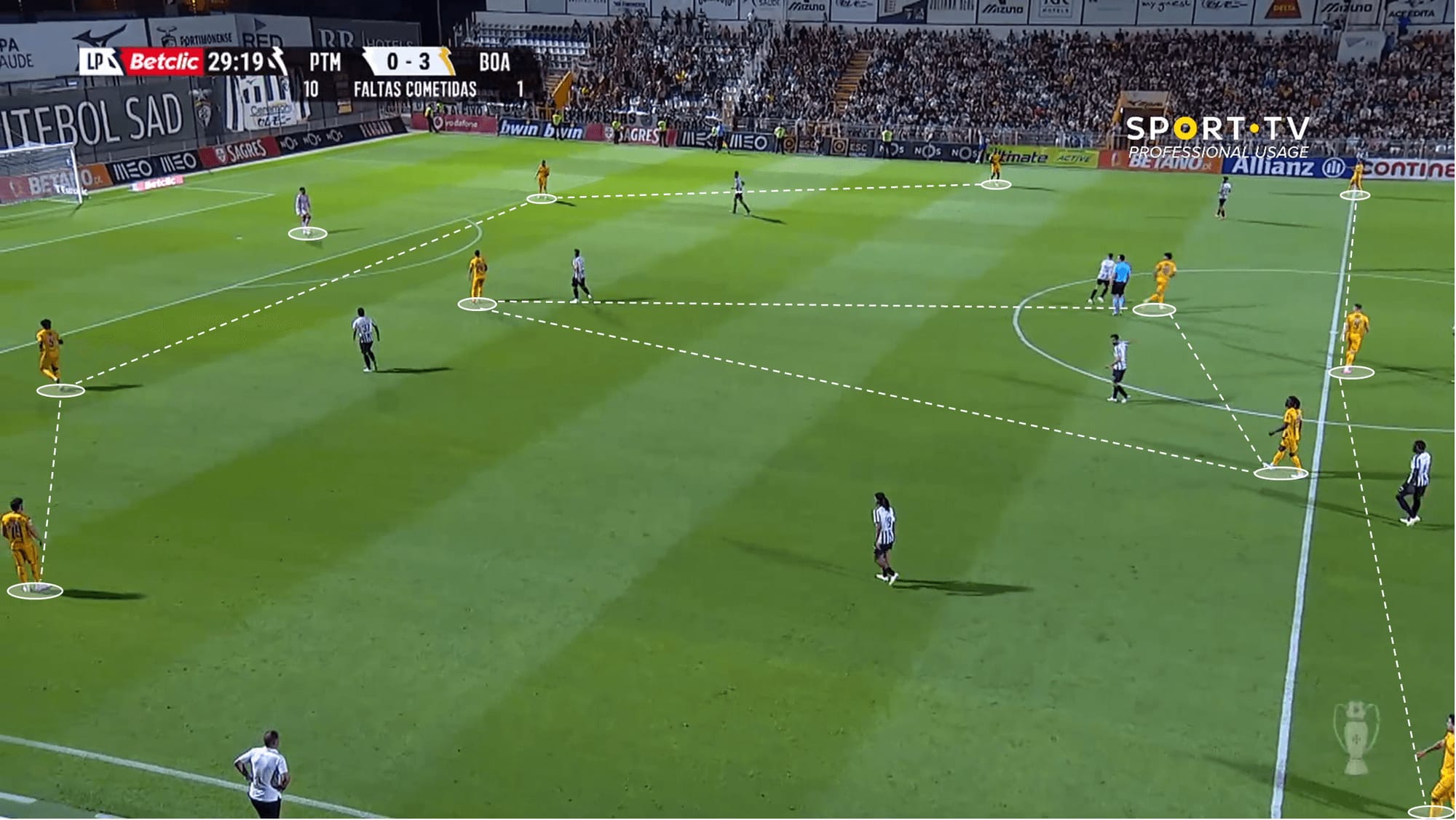
This low-risk approach is not related to the fact that this team plays a direct or non-direct game; on the contrary, Boavista seems to be a hybrid type of team which can wisely adapt their tactics to the different phases of the game. For instance, against Benfica, there were moments where they successfully built up from the back, and there were moments that they sought Boženík through a long ball.
The three most used players in the midfield are Sebastián Pérez, Miguel Reisinho and Gaius Makouta, and the three have different but vital functions in Boavista’s game plan.
Let’s start with the Colombian, Seba Pérez. In his fourth season in this Portuguese side, the 30-year-old was named captain; above all, he’s essential in the first phase of the game. He’s the most backtracked element of the three midfielders and offers immediate support to the ball carrier.
During our analysis, we understood that the Colombian entered the backline whenever the game was asking, and Boavista built up a three-man system from there. He’s intelligent and has a good game reading, willing him to find open teammates between the lines or even right on the back of the opposition’s defensive line.
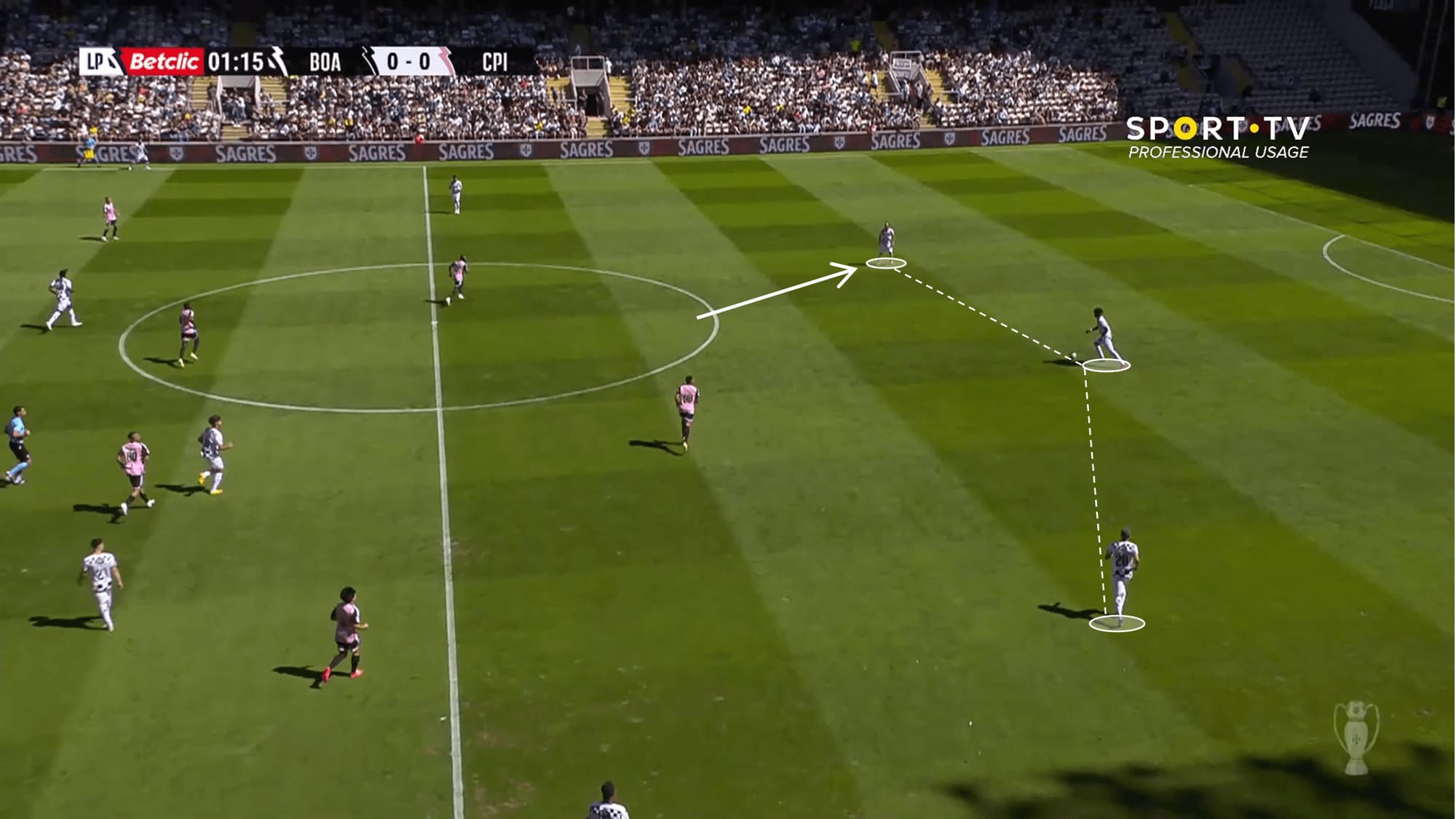
Recurrently affected by injuries, Reisinho finally seemed to find his ideal form, and he fits into this model, especially by being an essential linking element in the midfield. He’s a technically gifted player and typically positions between Pérez and Makouta. However, it’s also common to see him right next to Seba, supporting the centre-back.
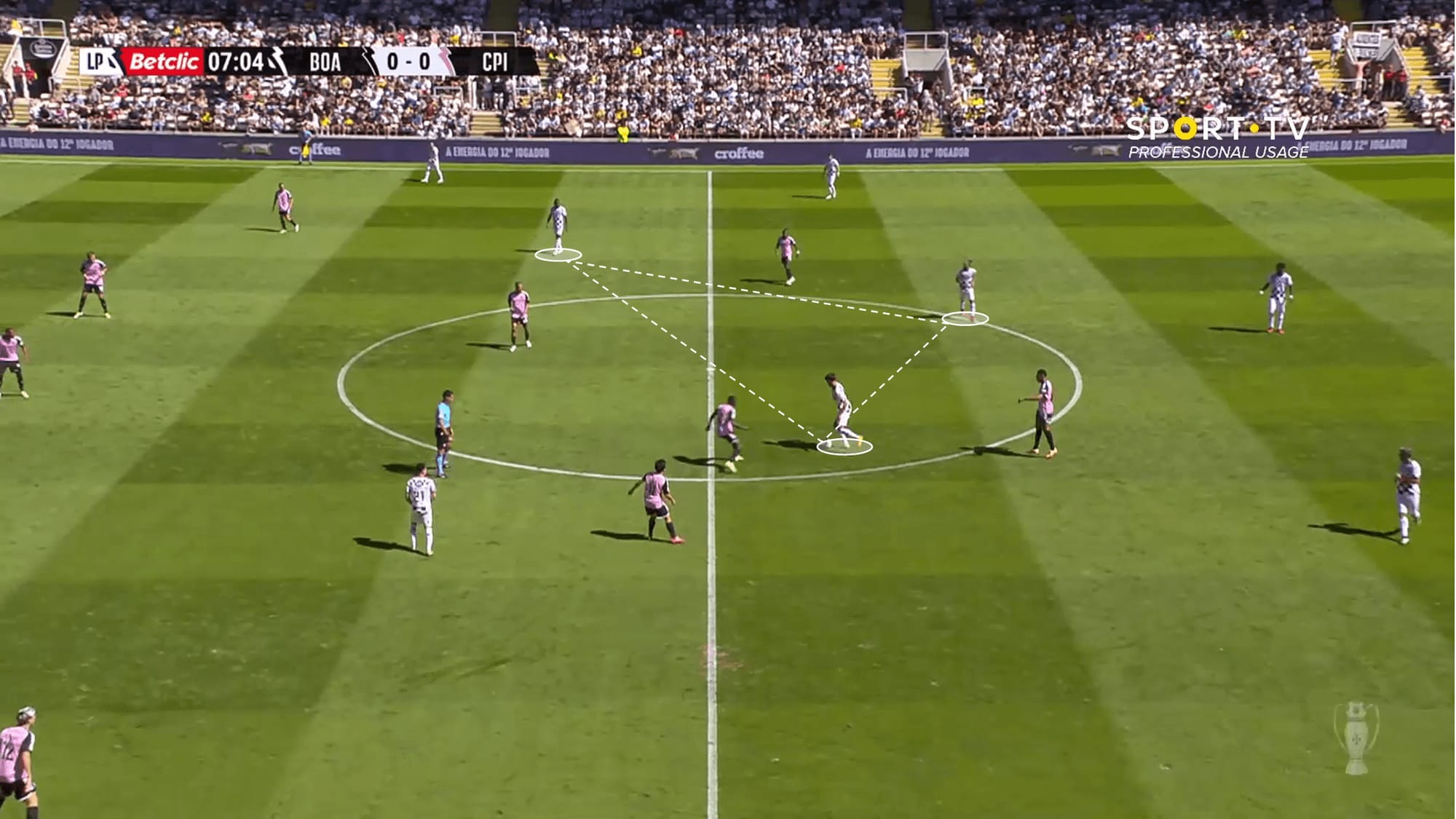
Makouta, on the other hand, has a higher direct offensive involvement, whereas last season, he scored two times and assisted seven. As we see it, the Congolese is defined as a box-to-box player where his strength and technical quality allow him to carry the ball from a more backtracked zone of the pitch until near the opposition’s box.
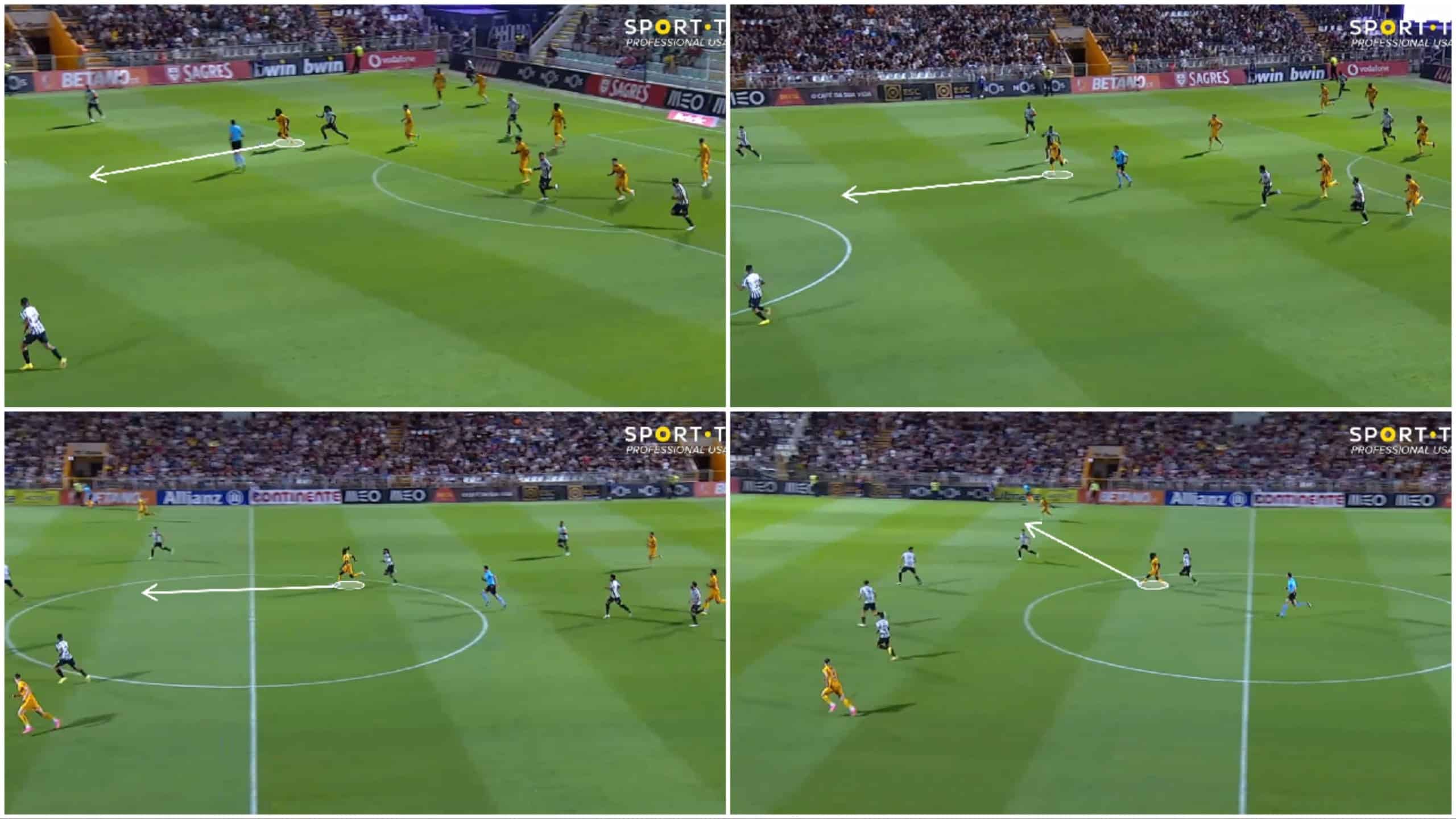
The 26-year-old likes to be positioned between the lines. However, we can expect to see him using the full spectrum of the pitch; in other words, we can see him wide, deep and low, just like the image below shows us.
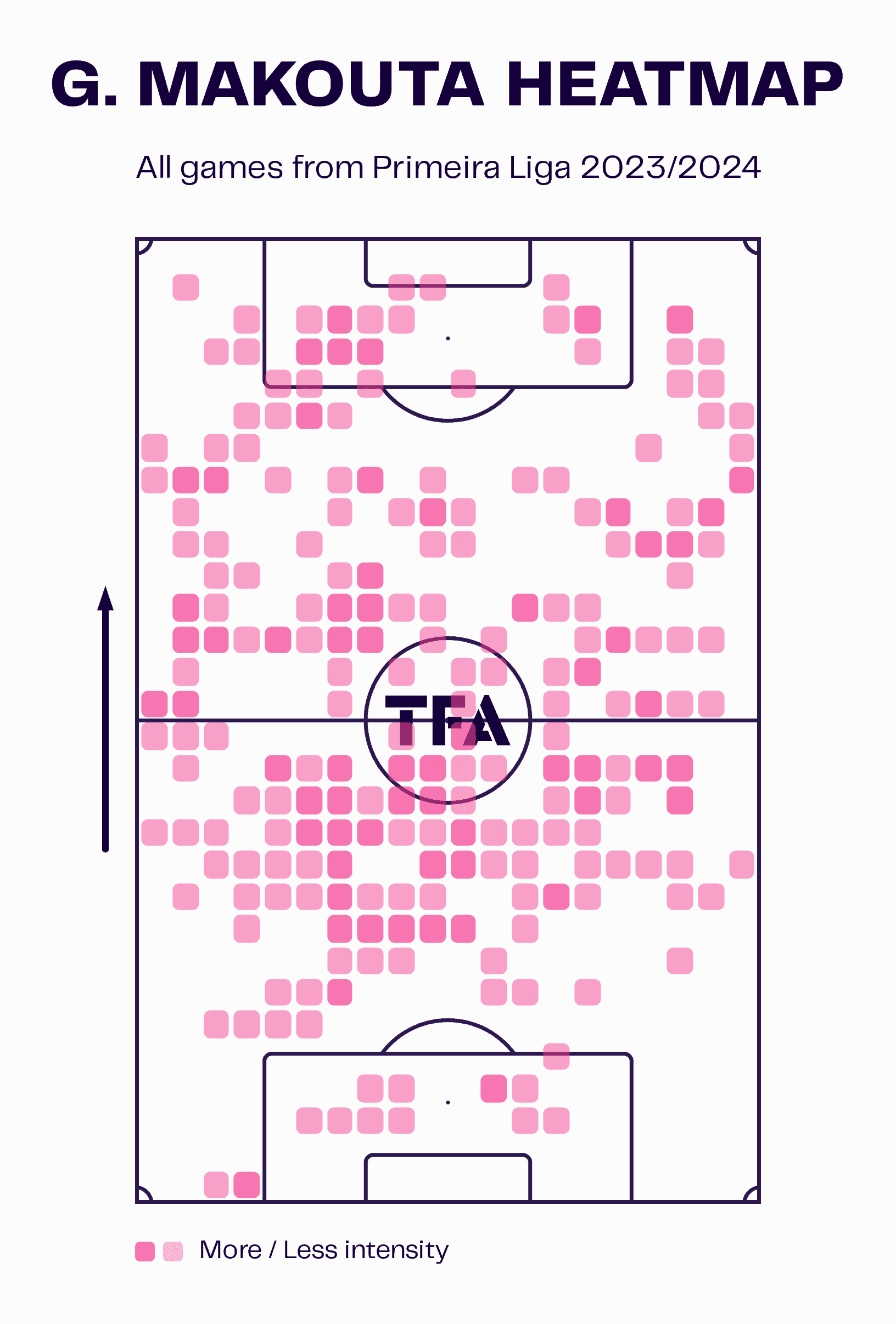
He is also essential due to his aerial game, especially when Boavista opt for a more direct game. Our database shows Makouta ranked in the 92.6th percentile in aerial duels won, which is a pretty enlightening stat.
Still, on Makouta, we think that one of the features he should work on his concerning his defensive transition and loss of possession reaction.
The two most regular wingers in the initial line-up are the youngster Tiago Morais on the left and the experienced Salvador Agra on the right. They are different players while in possession. However, they are similar physically, especially in their height (short), agility (high) and pace (also high).
Tiago is maybe one of the biggest surprises in Boavista this season, with already two goals scored in just five games. Initially, he likes to use the entire pitch width, yet his tactical awareness and technical quality allow him to explore more interior ground constantly.
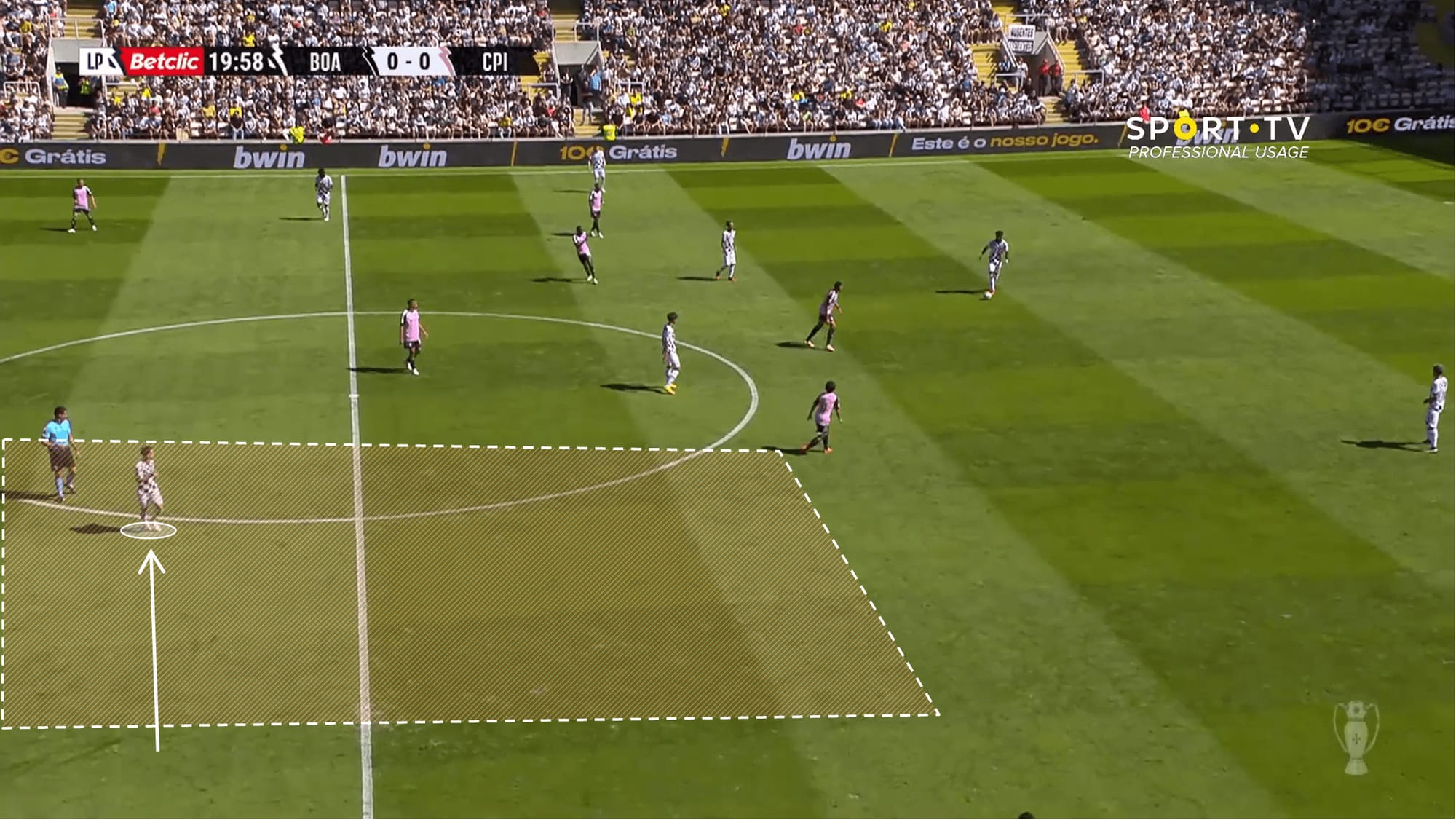
Conversely, Agra is a more limited technical player yet has incredible intensity on and off the ball, helping Boavista push offensively and defensively. Both Agra and Morais seem to understand the game while positioning themselves, especially by being often in different sectors with the full-back.
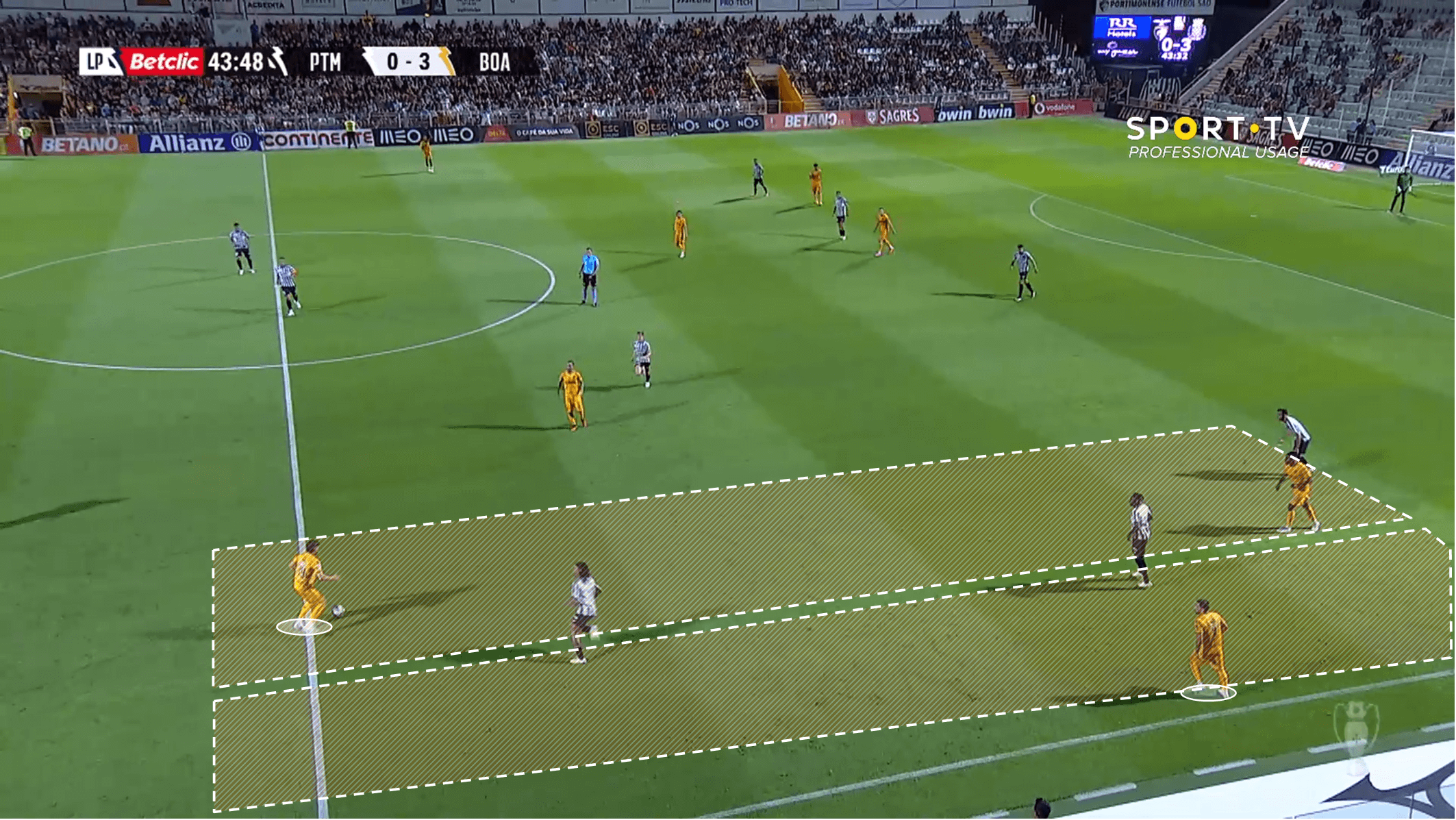
Agra also makes an exciting movement during his performances, which consists of seeking the space inside, opening a gap on the back of the defenders for Boženík to explore.
With that said, while Boavista passes from a 4-3-3 into an asymmetric 4-4-2 in the build-up, Tiago joins the three midfielders on the left, and Salvador is projected near Boženík.
However, as we referred to, this formation is not static. In some situations, Petit wisely positioned the attackers deep to benefit in a hypothetical counterattack or surprise the opponents with a ball in their back. Below, we have a perfect example of what a deep positioning of Boženík looks like, and the benefits are quite clear when the Slovak scored the winning goal against the current Portuguese national champions.
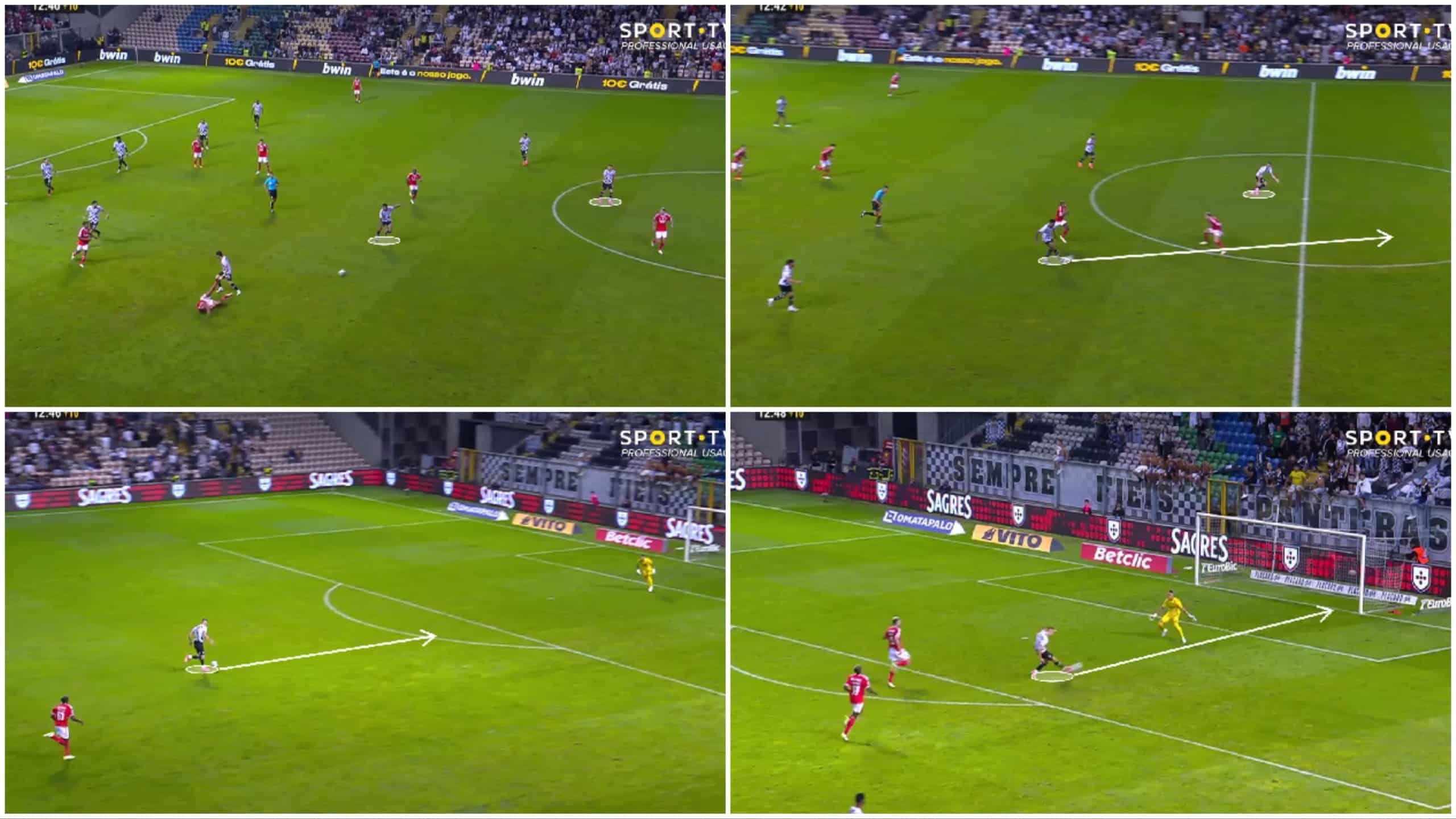
In addition, the deep positioning of these players could be due to the creation of space between the lines, yet Boavista does not often follow this approach.
Finally, the centre-forward position is often occupied by the 23-year-old Slovak, Róbert Boženík, who is having an outstanding start in his second season for Boavista. He’s an objective player who does not need much space or time to prepare his shot and score.
He’s not a player characterized by his strength but by his height (1.88 meters) and intensity on and off the ball. Together with Makouta, they are important in the team’s aerial game because of his strong presence in the box, especially during Boavista’s build-up.
Boavista out of possession
As we referred to previously, Boavista’s mentality has been changing since Petit took charge, and although with fewer resources, they like to have the ball and recover it as fast as they can. For that, Boavista elaborates on an effective pressing plan which obstructs the other team’s build-up.
They are quite an intense and aggressive team while pressing and especially when discussing a loss-of-possession reaction.
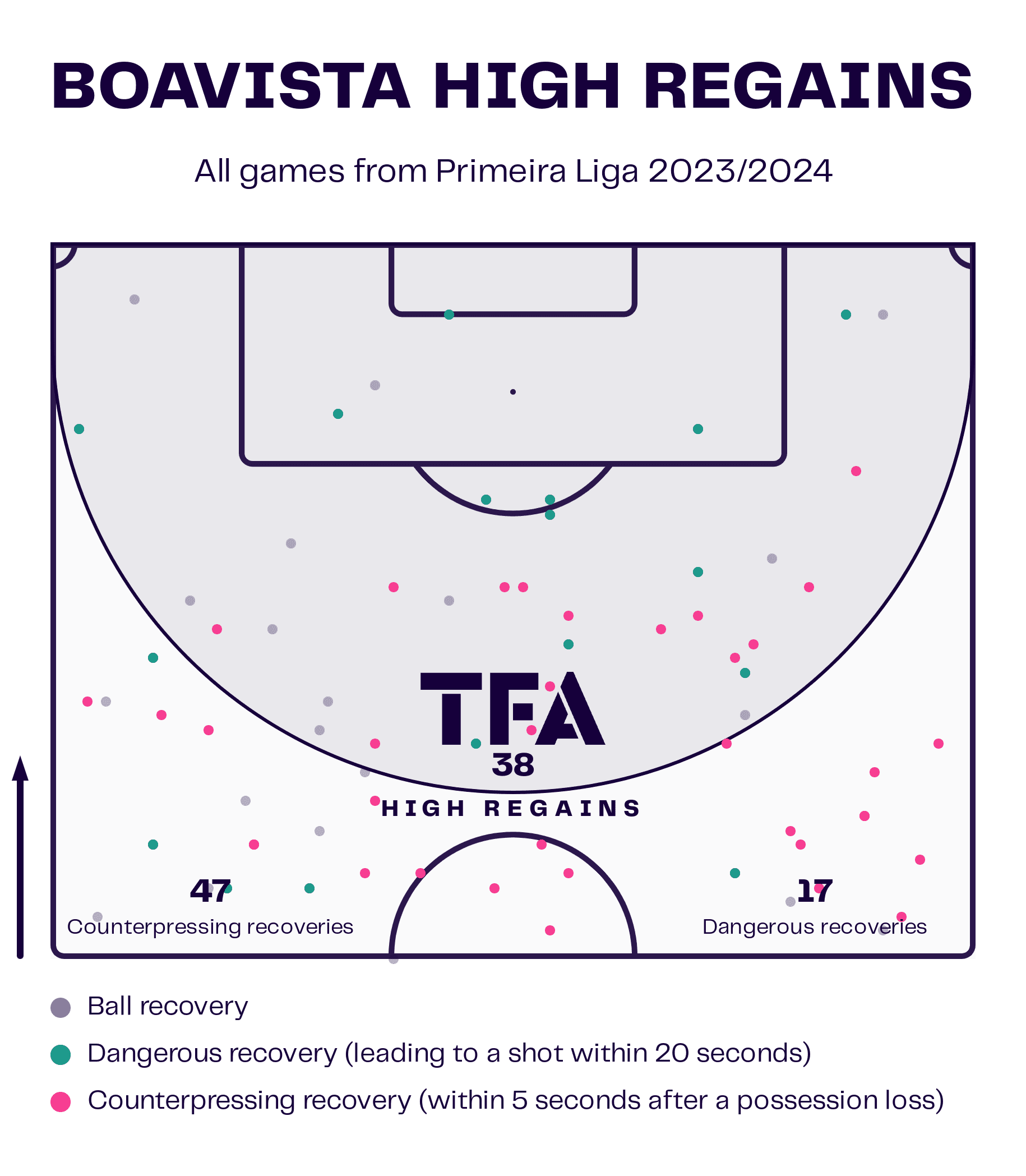
According to the above radar, Boavista, on average per game, successfully recovered the ball 12 times after losing it in a five-second interval, which is a clear sign of such intensity. In addition, this season, they also recovered around 38 balls near the opposition’s box, from which 12 led to a shot within 20 seconds.
Like almost every team, it’s natural that the level of Boavista’s defensive and pressing block can vary by the level of their opponent or even with the stadium they are playing in (home or away). However, in any case, Boavista does not dispute the game from equal to equal against their opponent.
Initially, they positioned in a 4-2-3-1 where Reisinho joins Seba as a pivot, leaving Makouta with the two wingers Agra and Morais.
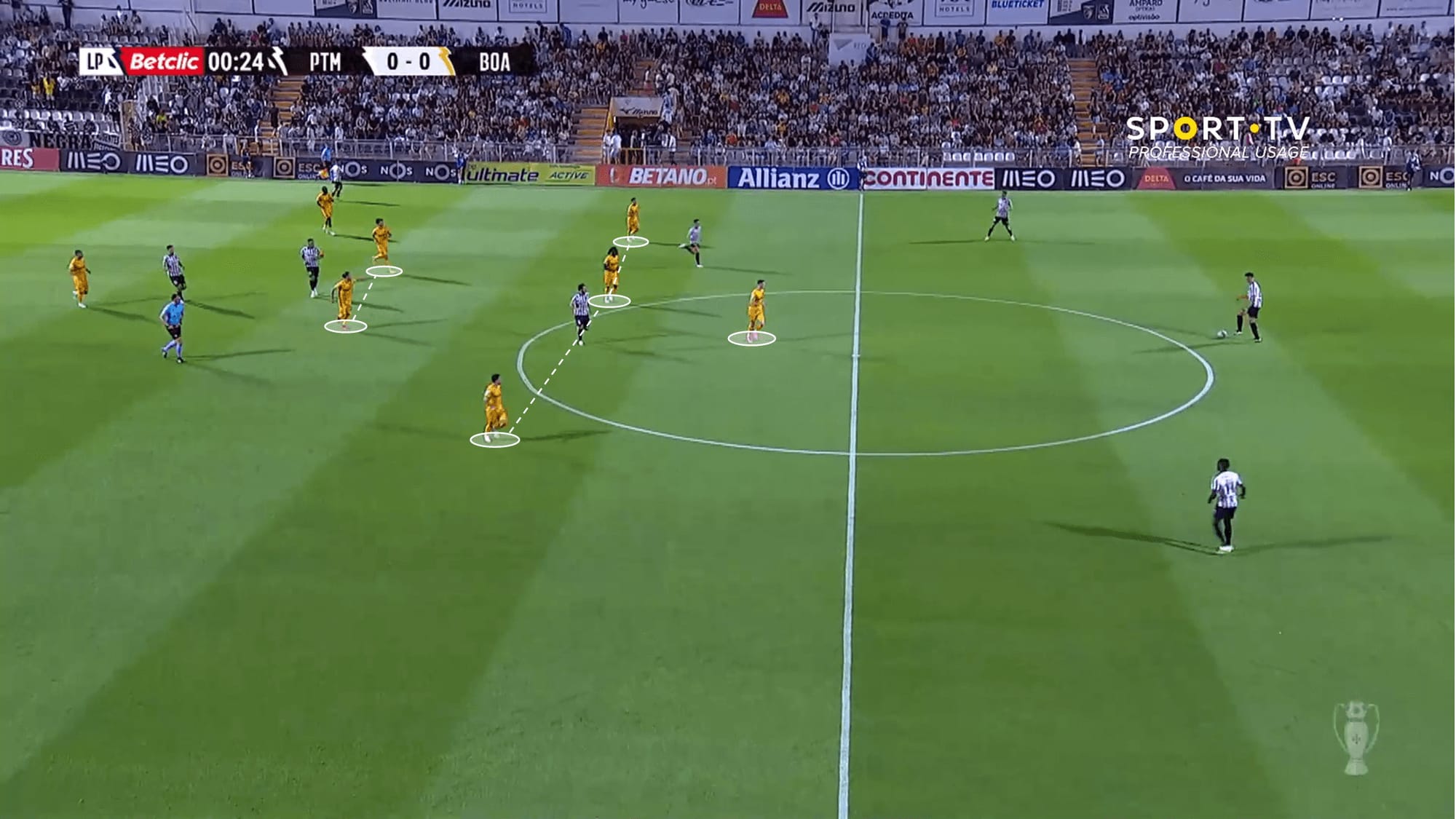
Yet, the midfielder’s behaviour is influenced by the positioning of their opponent and the ball carrier, where, for instance, it’s visible Reisinho joining Makouta in a more advanced zone of the pitch, leaving Seba alone as a single pivot and forming a 4-1-4-1. Their primary function is to impede and obstruct the game of the defensive midfielder, forcing them to seek a more lateral solution.
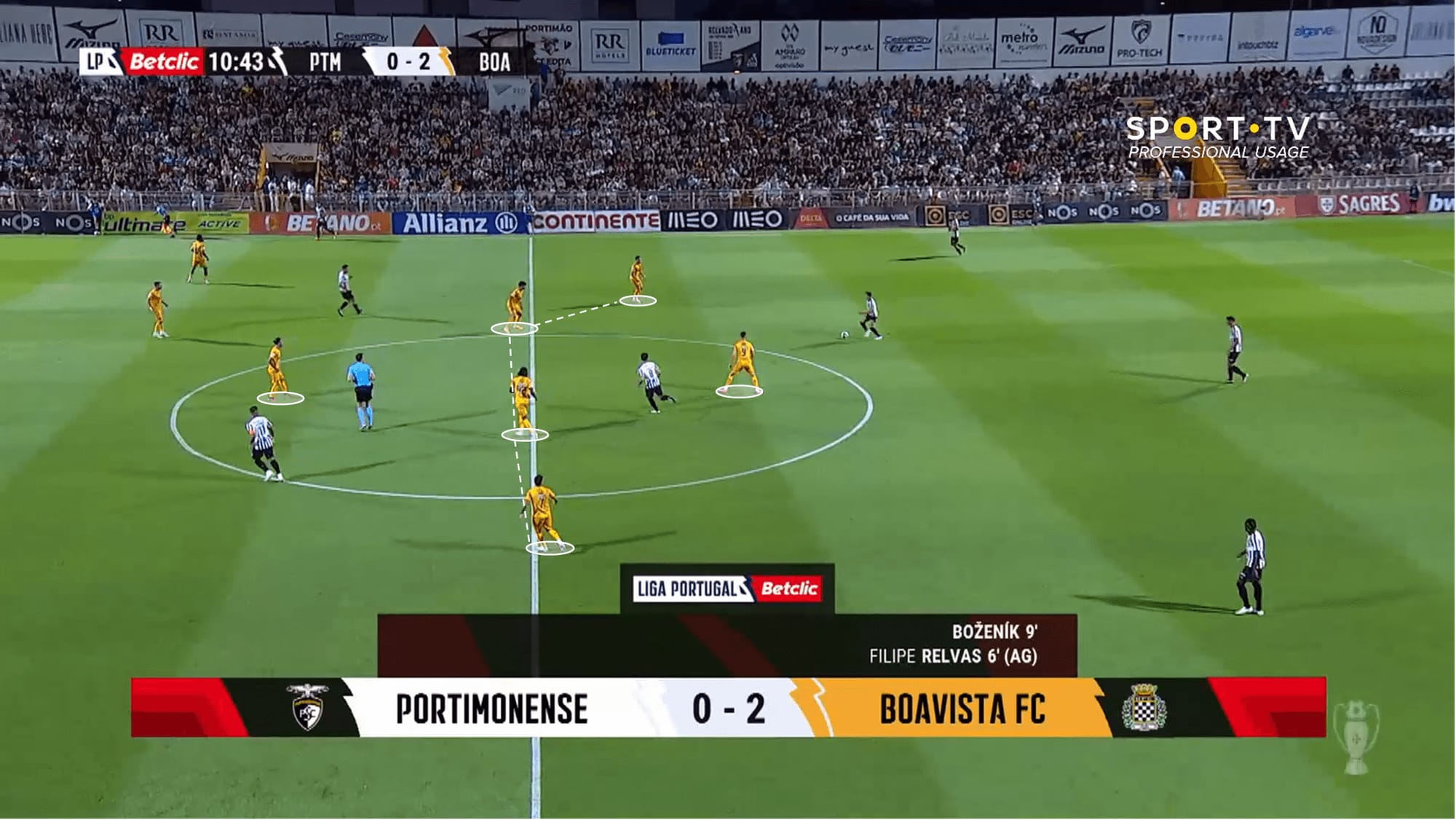
Even though this upward positioning can be helpful to diminish the opponent’s chance of building up, it can also leave space to play between the lines, especially when Pérez is left alone, as we can see above.
Most teams opt to press the centre backs with their only or two strikers, yet Petit chose a more original way to do it, using the wingers as second forwards. For example, Boženík starts the pressing in the first centre-back; when the pass is made to the other central defender, the winger almost immediately marks him. The ball carrier typically lacks a solution because both sides are pressing him.
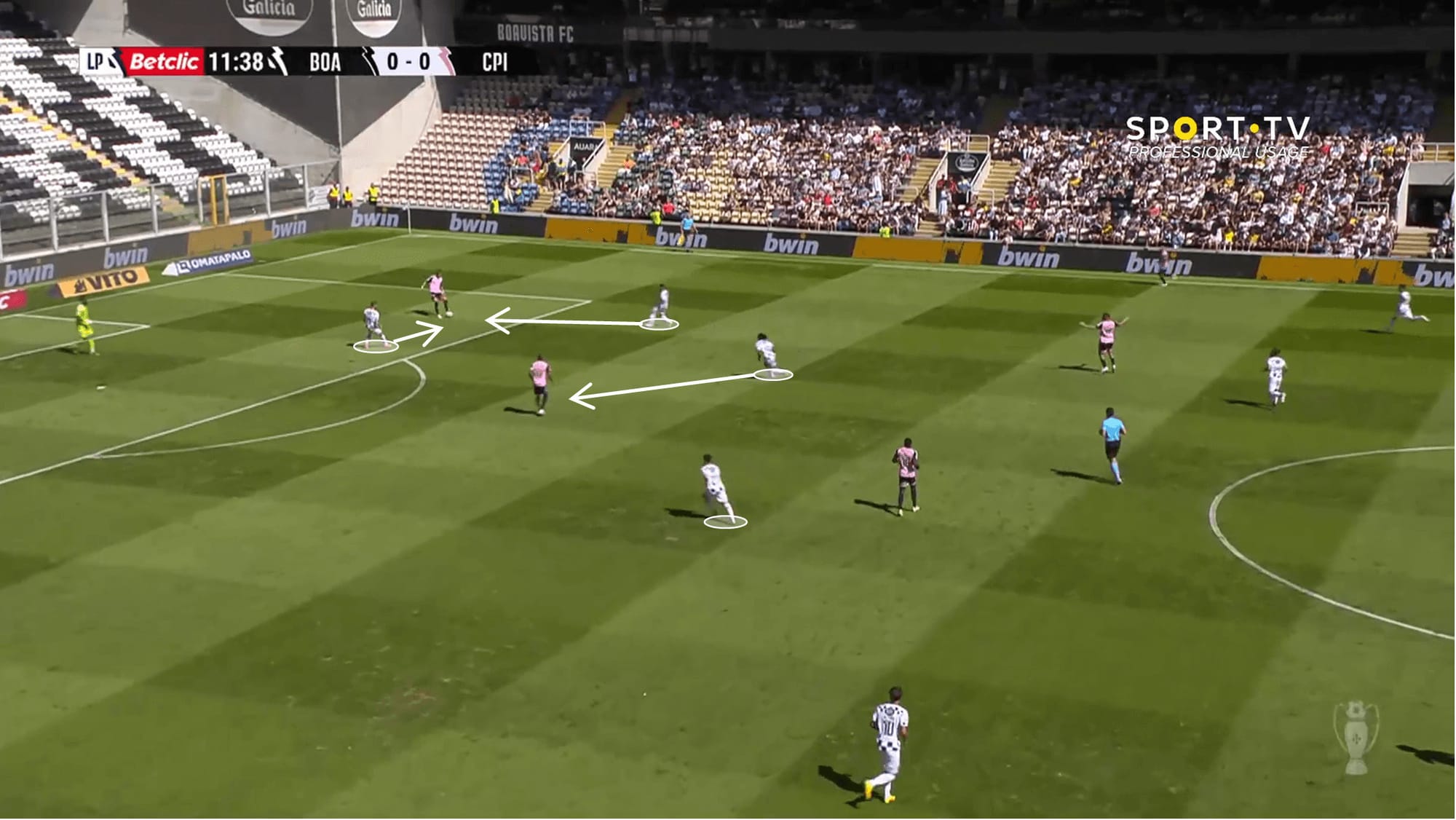
Having that said, the obvious assumption is that the full-back is entitled to press the other full-back, yet this’s wrong in Boavista’s system. To not compromise his team defensively, Petit maintains his full-backs marking the wingers, leaving this task to the side-of-the-ball midfielder, Reisinho.
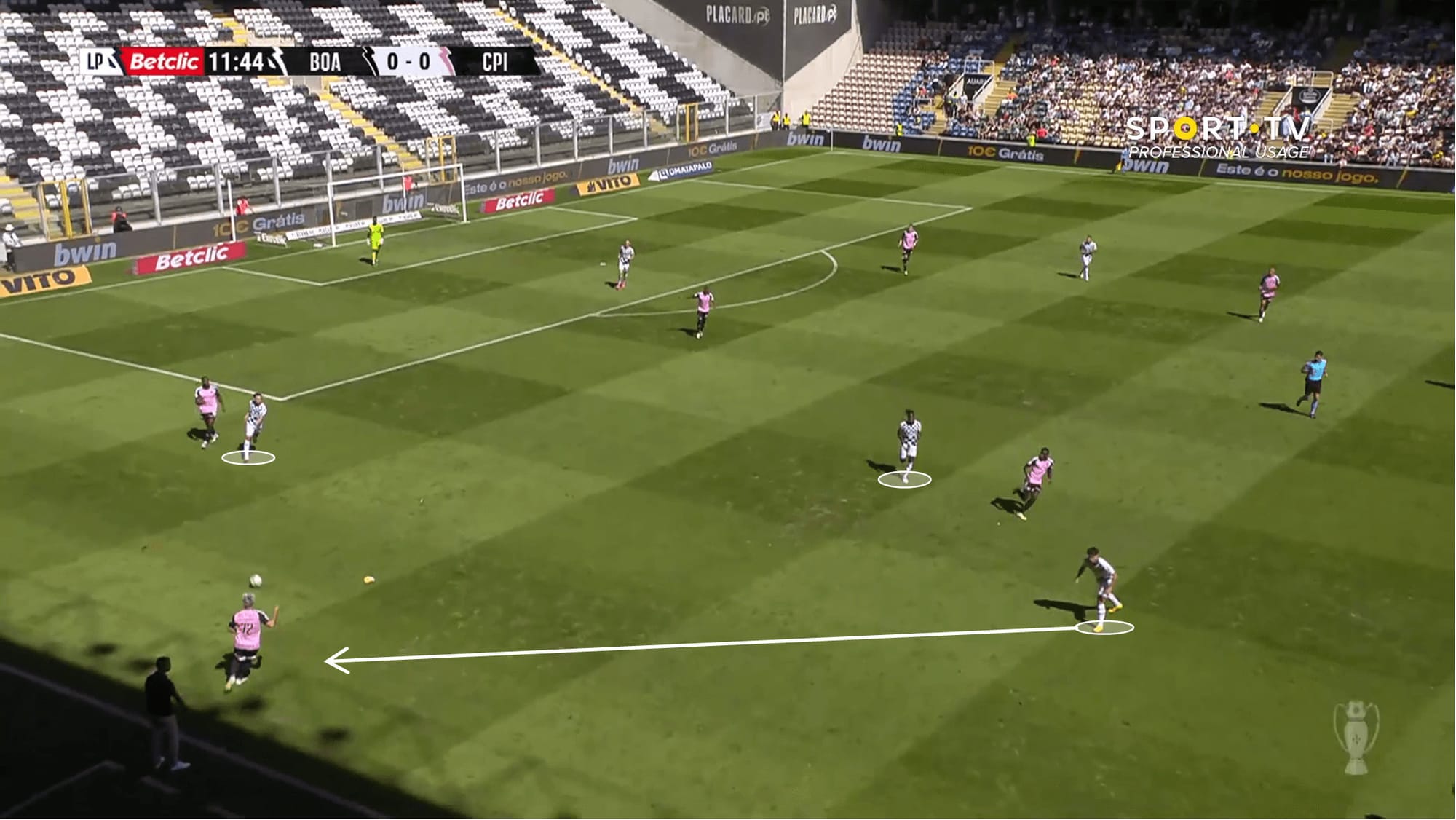
In this example, we can see him initially closing inside, but as soon as the ball is passed to the full-back, he runs into him. This can be both tactically and physically demanding. However, Makouta and Reisinho, in their Boavista’s initial league games, seemed to handle quite well.
When the opponent is playing in Boavista’s own half, Seba has a vital function in contributing to his team’s defensive cohesion. He usually descends to the backline whenever he understands their solidity can be compromised. For example, if the full-back presses the wide-open winger, he often covers him.

The fact that he plays as a single pivot often leaves him with a significantly reduced margin of error while defending and a minimal divergence from Petit’s defensive plan, which can highly compromise defensively.
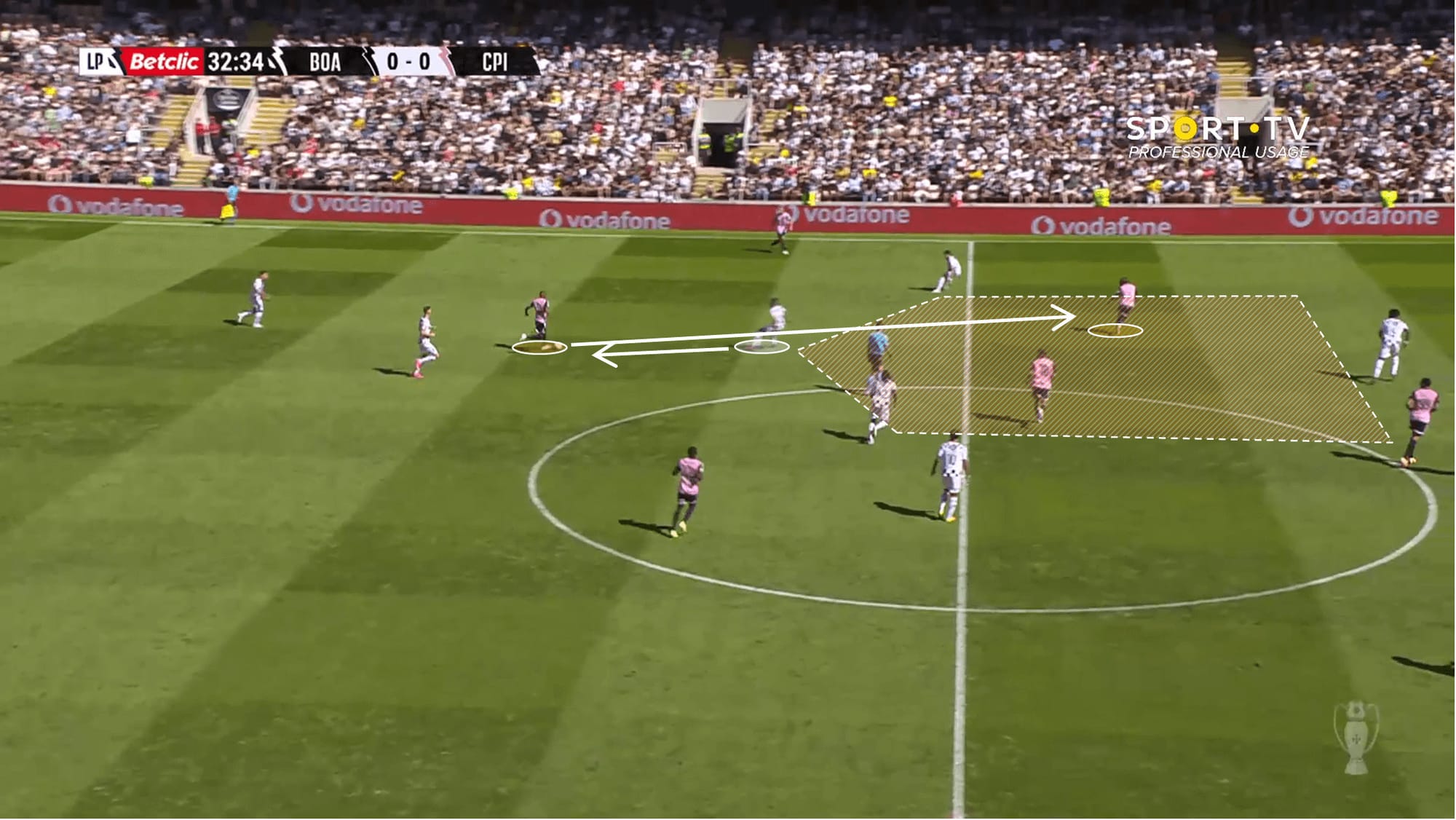
In this example, we can see Seba pressing the centre-back, which left not only four players between the lines but, most importantly, a situation of numeric inferiority in their half. This simple distraction led to a goal suffered.
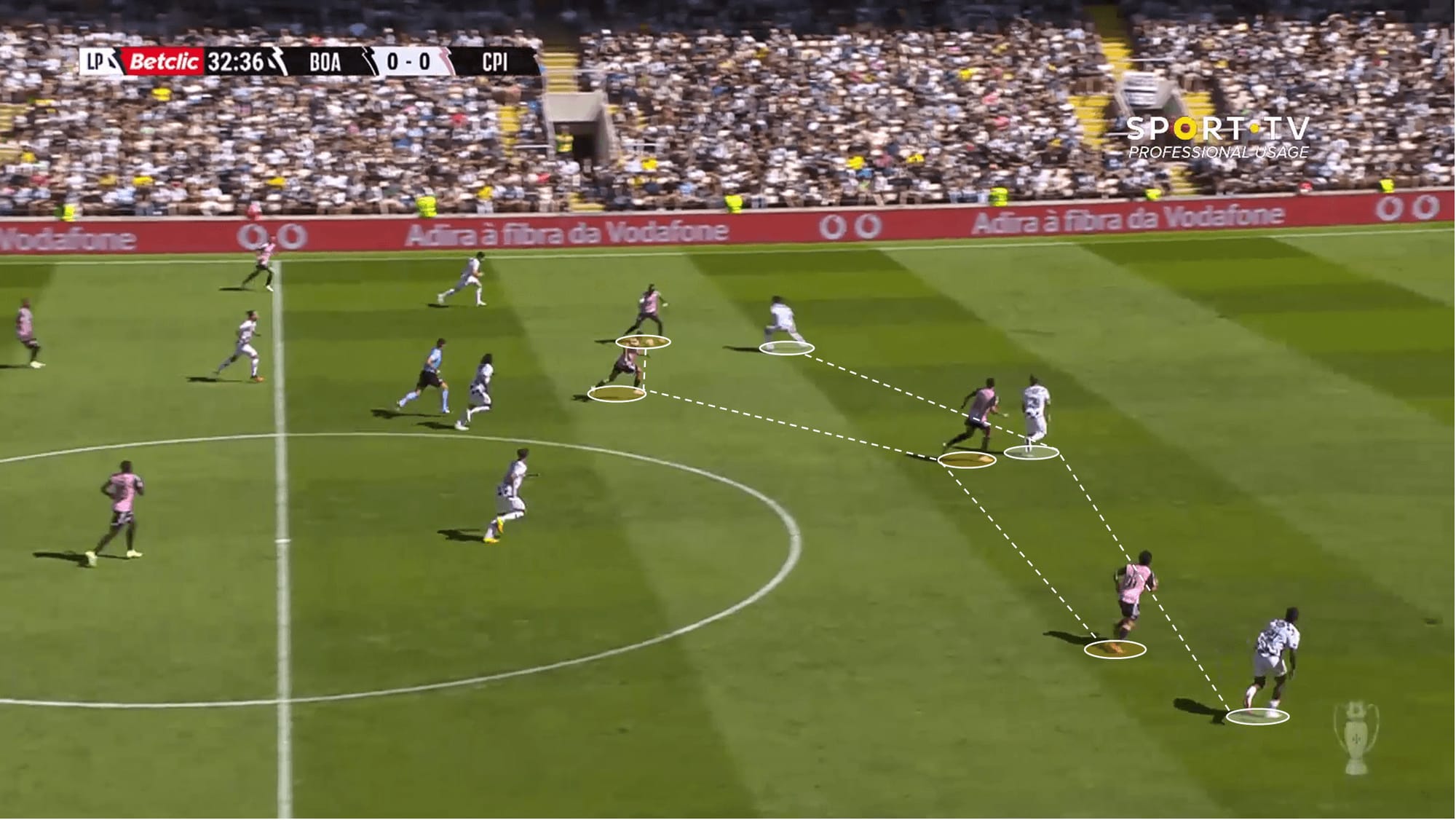
Conclusion
In this scout report, we tried to cover Boavista’s offensive and defensive style as the main reasons for their success in this season’s start.
Seba Pérez, Makouta and Reisinho are fundamental players with different roles in their team, where the Colombian is more important in the initial phase while building from the back. Reisinho is relevant as a linking element, and Makouta as a box-to-box, who, due to his strength and technicity, is comfortable carrying the ball near the opposition’s box.
We also reviewed the differences between the wingers’ roles while playing and the respective asymmetric offensive game plan.
The defensive phase was not forgotten, and we tried to understand Boavista’s pressing plan as the importance of the role of Seba as a vital element for Boavista’s defensive solidity.
Finally, in our opinion, Petit has been doing an outstanding job as a head coach since he took charge back in 2021 and is printing an identity into such a historical club in Portuguese football.






Comments